I’ve been following what the guys are AirAbility and Benchrest UK have been doing with interest for a few years now. The rise of superstar Matthew Gleaves to British Champion has been a story that had me interested from the get go, with his detailed reports on training routines, kit choice and downright dedication to the sport. I even commissioned him to write a series on everything benchrest for Air Gunner magazine when I was the editor there.
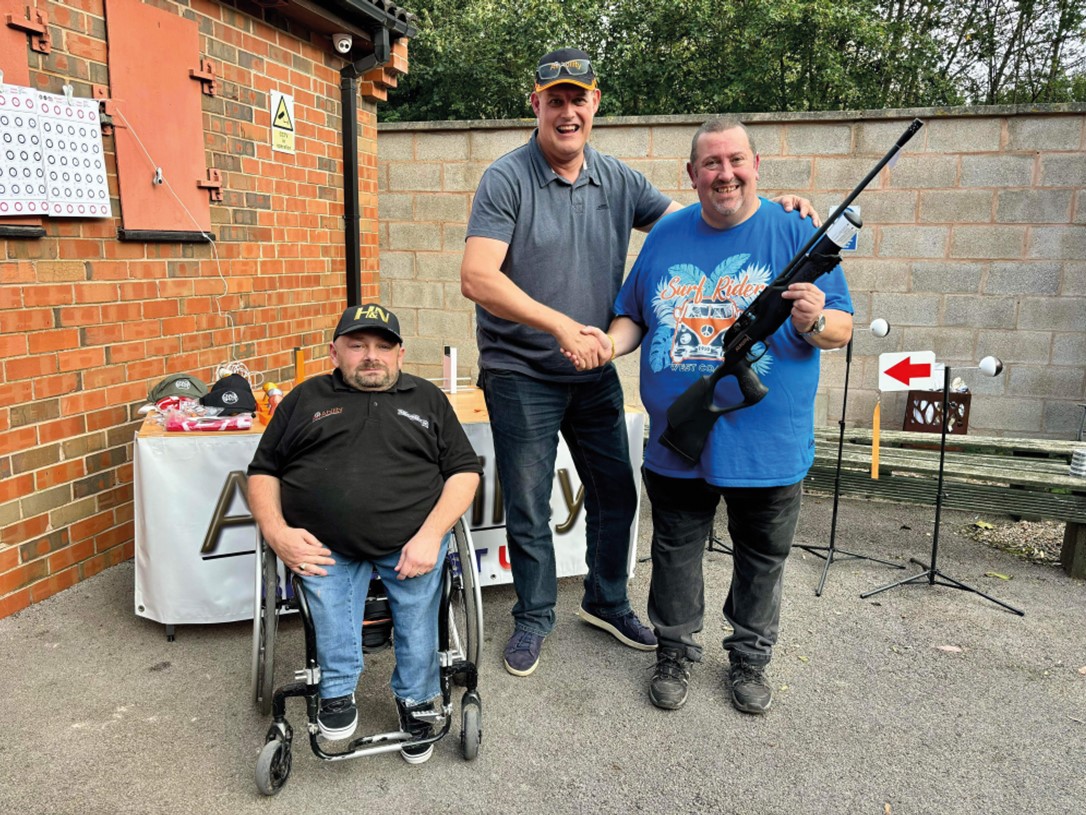
So, when Matthew asked me if I’d like to attend one of the shoots and have a go for myself to see what it’s all about, I jumped at the opportunity. The AirAbility Live event was the perfect introduction for me, or so I thought…
The aim of this particular event is to run a separate class for ‘rookies’ who shoot their own competition alongside the ‘professionals’ who have been shooting at events all year.
Benchrest is the same as any other sporting event that is held over multiple rounds at different venues throughout the season, the person with the most accumulative points at the end of the series is crowned winner.
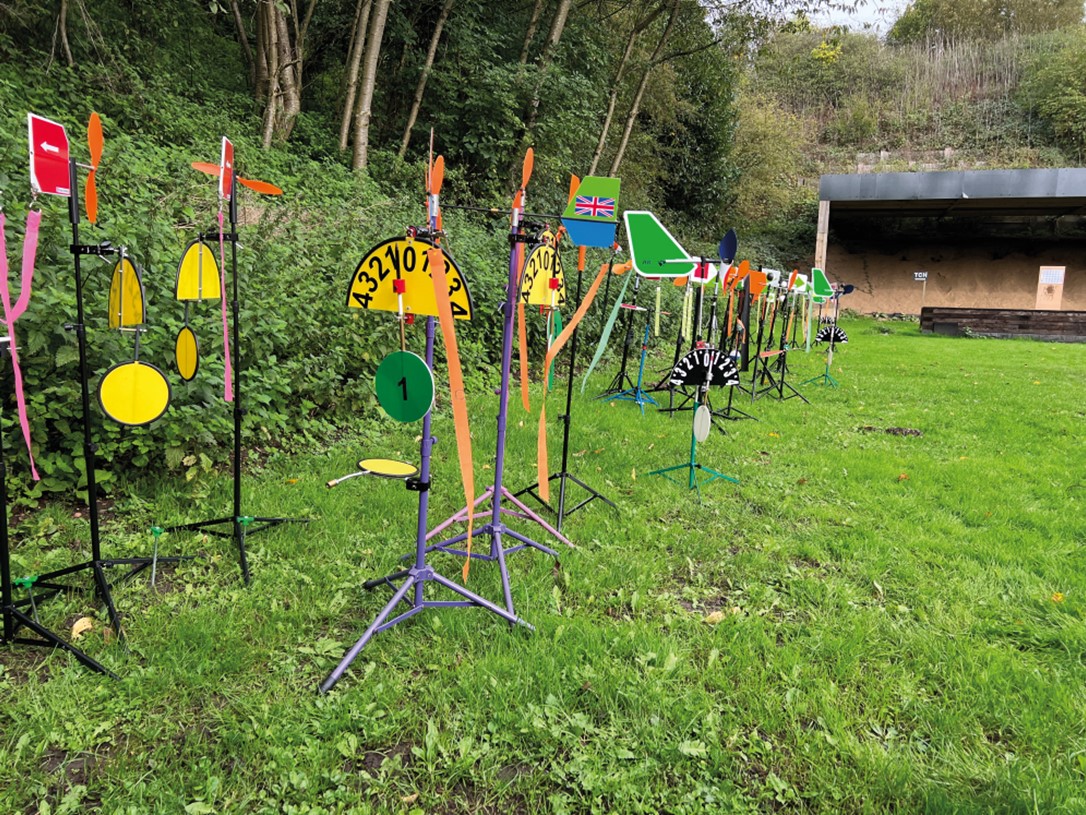
PROS AND CONS
There I was, getting all excited about entering my first airgun competition in three decades, thinking I was going to be up against a load of other newbies who, like me, really didn’t have a clue what UK Benchrest competition was all about.
However, the night before the event Matthew reliably informed me that they’d been booked out solid with newbies and that the ‘committee’ had all decided that I should shoot alongside the professionals on the day!
Now this is where things got interesting. I went for being really excited and a tad nervous about shooting a discipline I’d never shot before, to overwhelming ‘bricking it’ because I was going to make a fool of myself shooting against god knows how many British and World champions in a highly contested competition. What had I let myself in for?
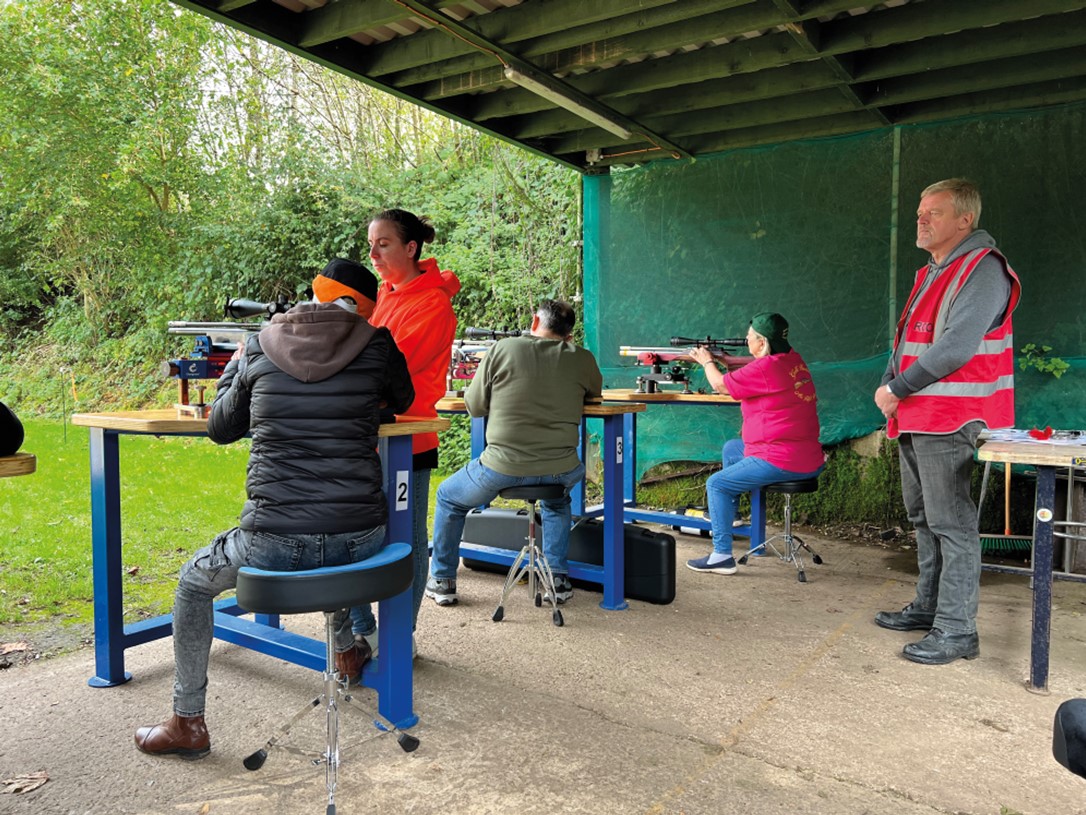
FAMILY FUN
To cut a long story short I needn’t have worried or put myself through all that stress. I arrived at the Derby Rifle and Pistol Club and was greeted by a huge family of smiling faces. There were loads of competitors for both the Rookie and Pro classes, their wives and girlfriends, and even some of their kids. Within seconds I knew that I was going to love this event, the whole atmosphere was exciting and friendly and I felt right at home there.
In-between the three rounds of shooting, all the competitors sit outside and chat, eagerly awaiting their cards to emerge from the ‘Room of Gloom’ where they are meticulously marked and debated. This is a science in itself, and the aid of digital microscopes and measures are a must for this purpose.
Nestled in-between some of the cars was the ‘Shooting Widows’ club, the wives and husbands of the competitors, sitting around having a picnic with flasks of coffee (G&Ts so I’m told in the summer). It was a fantastic experience all round, and everyone that I spoke to was really friendly and full of advice.
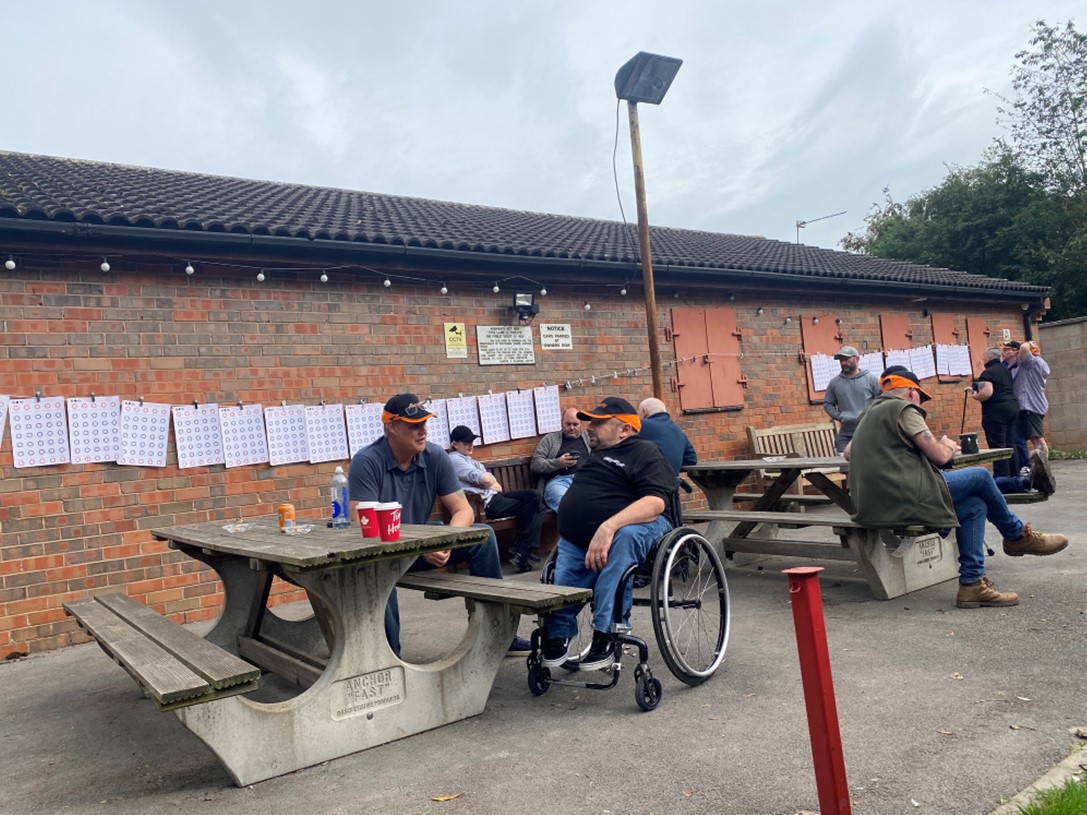
THE RULES
I’m not going to go too in-depth with the rules surrounding benchrest shooting here, the reason being that I have commissioned Matthew Gleaves and Graham Freeman to write a full series on everything you’ll ever need to know about shooting benchrest competitively.
What I will do is tell you how it is from a complete novice who had never even seen a benchrest spec rifle, let alone shot one before!
The rules are simple, you get a few minutes to set up your bench, rest and rifle before your first round of the competition starts. This also includes setting out your wind flags down range. Once everyone is sat at their station and ready, the range officer tells you to take your rifle out of the case and mount it in the rest. Once everyone is ready to shoot, the RO tells you to make your rifle ready to shoot, and then the competition begins. You hit the start button on your timer clock, which is set to 20 minutes, and off you go.
It's a silent event with absolutely no talking allowed. If you have a problem you put your hand up and the RO will come to you. The actual shooting part is all very serious, and it needs to be. To shoot at this level you have to be totally focussed.
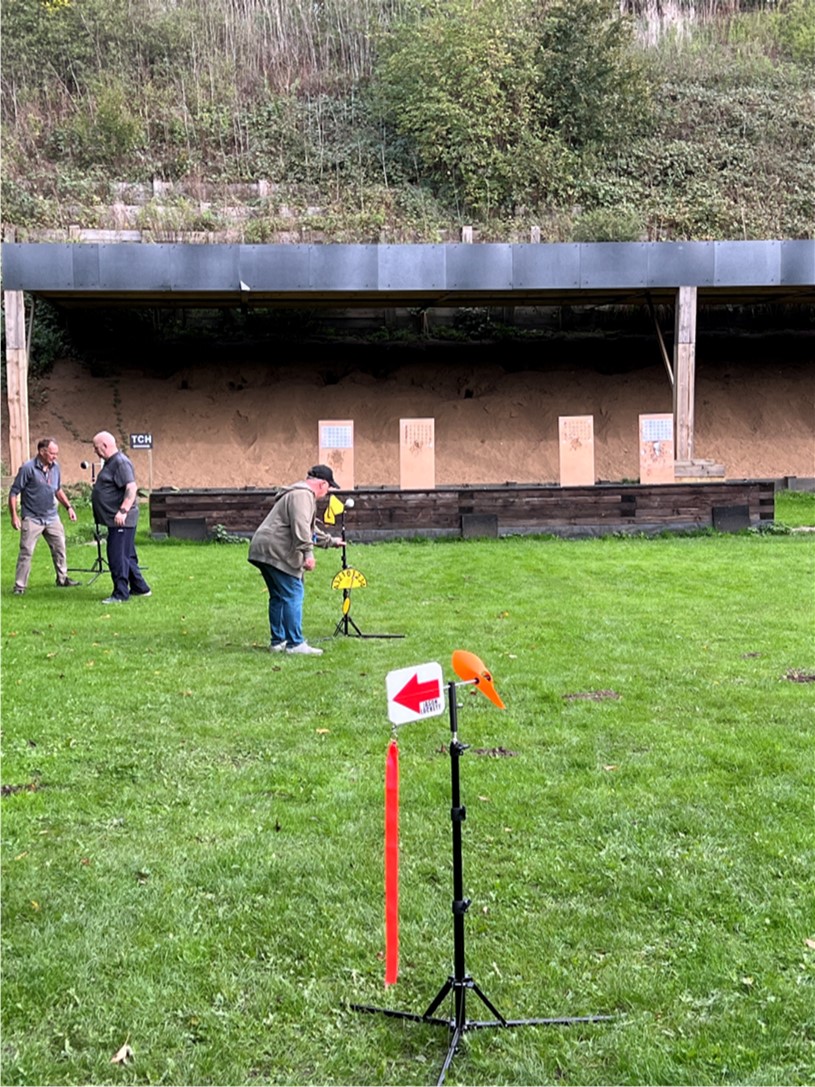
MY FIRST ROUND
I had been appointed a mentor for the day in the form of Jason Lockett, a guy who went above and beyond to make my first competition as comfortable as possible. I’m in no doubt that if it weren’t for Jason, I would never have been able to shoot as well as I did that day, so thanks mate, I owe you a pint or three.
So there I was, sat at my bench, my rear end going 50p/5p. Good ol’ Jason had set out my flags down the range, set up the rests and the rifle for me – a Lobo XR-100 Light Varmint. Jason even gave me my own tin of pellets that he’d sorted and weighed, so all I had to do was load and shoot.
Now I know that all sounds really simple, but believe me when I tell you I struggled for the first five minutes or so. There’s no stock on the rifle, you sit behind it and nothing wedges into your shoulder and there’s nowhere to put your cheek. Your left hand is busy twiddling knobs and levers to make the minute adjustments at the front end of the rifle to manoeuvre it so that you can see the first target – and that was completely alien to me and took a few minutes of getting used to. However, get used to it I did, and in no time at all I was remembering what Jason had told me during my five-minute verbal coaching session (I never fired a shot until the first round of the competition began).
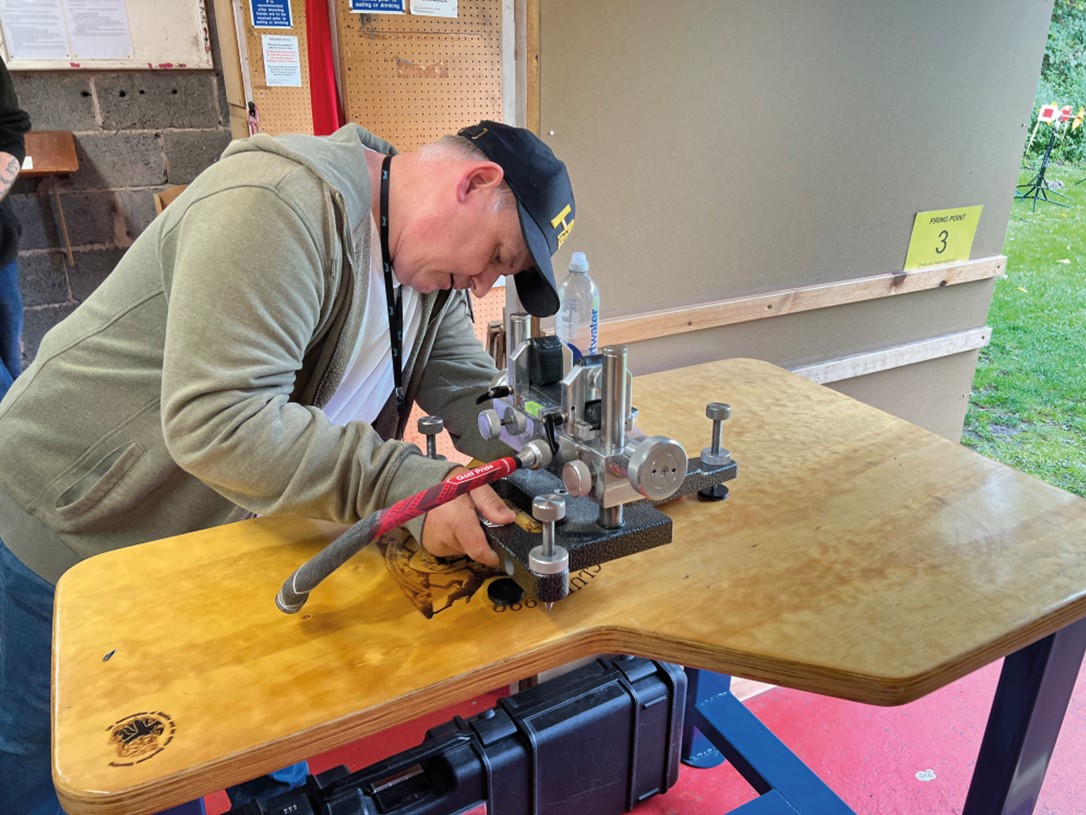
ALL ABOUT THE FLAGS
The key to this type of shooting is reading the wind, and after the experience of shooting this event it has really made me think about my hunting out in the field. The flags used are amazingly sensitive to even the tiniest puff of wind, and the key is to learn what that wind is doing via the positions of the flags. For instance, you may have the first flag set at 5 metres in front of you, and that my be pointing to the left, whereas the middle flag, and the one just a few metres off your target may be pointing the opposite way, or even towards you!
The key to success is reading that wind and timing your shots accordingly to hit dead centre.
It’s really not as easy as it sounds and every single round you shoot is different. In fact more often than not, every single shot you take is different!
I remembered what Jason had told me though, and watched my flags like a hawk for a pattern. When I had the three flags in a certain position I took a few shots on the red test targets down either side of my score card. You’re allowed to shoot these as many times as you like during your 20 minutes, which really does help. Once I’d fathomed out where I needed to aim for a particular flag scenario I waited for the flag set up and swiftly moved onto the blue scoring targets, always keeping an eye on those flags. When the wind pattern changed, I stopped shooting, observed the pattern and took a few shots at the test targets, until I was confident that it was time to move onto the scoring ones again.
In no time at all my 20 minutes was up and I’d managed to shoot all 25 of my scoring targets. I had absolutely no idea how I had done, as I helped Jason pack all the gear away to make room for the next round of competitors.
I must say at this point that you have to clear the range of all your gear and flags so the next person after you can set up, then once they have shot their round they do the same and so on until everyone competing has shot their three rounds. It’s also worth mentioning that no competitor shoots the same lane twice, everyone is moved around onto a different lane for each of their rounds, just to make life a little more interesting and fairer – the end lanes may well have a consistent wind pattern, or maybe completely the opposite with winds swirling around as it hits walls or trees etc.
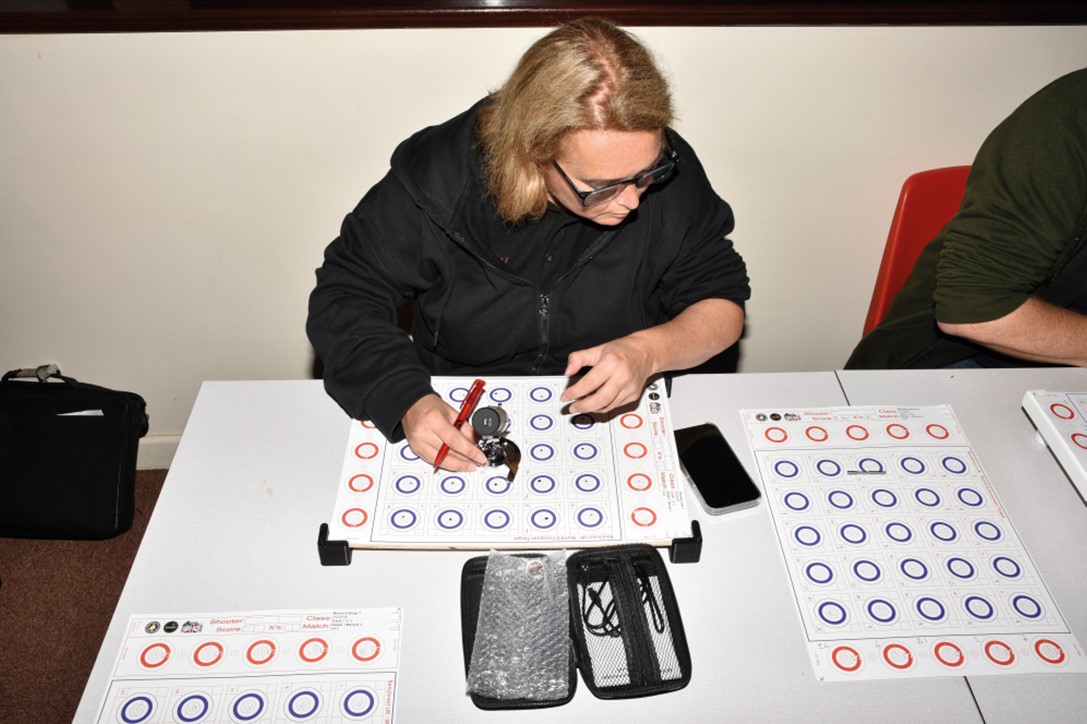
WOW!
As I sat there, eagerly awaiting my card to be marked, I was feeling quite anxious because I had absolutely no idea how I had done. To make matters worse, I neglected to mention that for this and the two subsequent rounds, I had been shooting right next to Matthew, the current British Champion! Talk about in at the deep end.
When my card finally made it onto the washing line outside the club house I was amazed to see that I’d just shot 242 out of 250! I was over the moon, as was Jason.
“Are you sure you’ve never done this before, Dave” was the question that pretty much everyone was asking me.
When it came to my next round I was in the zone, full of confidence but not cocky. Even the slightest mistake can cost you valuable points in these events, so I kept my composure and managed to shoot a 243 – one better than the previous round. On my third and final round I was really getting into it. I messed up one shot which cost me a couple of points, and do you know what, I knew I’d done it as soon as I pulled the trigger. After chatting to the folks shooting the competition it seemed that this is a common occurrence. Your heart says pull the trigger, but in your head you know you should stop, refocus and wait for the wind to do its thing. However, I still managed to shoot a 244 card, again one up on the previous round, I was absolutely buzzing, and if I’m honest I just wanted to get back on the range and shoot another card, and another.
Alas the competition was over, and after a good 20 minutes of ‘judging’ the final scores were announced. I’d only gone and got myself into the top 10 on the day! In fact I finished ninth overall out of 22 competitors.
The final thing I will say about the scoring is this. I had actually finished joint sixth with three other competitors on 729 points out of 750, however, the twist in this tale is all about the ‘X’s. They’re so important. An ‘X’ is scored when your pellet touches or obliterates the tiny little dot in the centre of the target, and these are used as a kind of countback for when people are tied on points. As you can see from the results I only managed to hit 17 ‘X’s, whilst Rob Robertson, who finished three places above me hit an impressive 30 of them! That’s just another really interesting and exciting part of benchrest shooting – pinpoint accuracy is key and the reason why it is so totally addictive. I really can’t wait to have another crack at it!
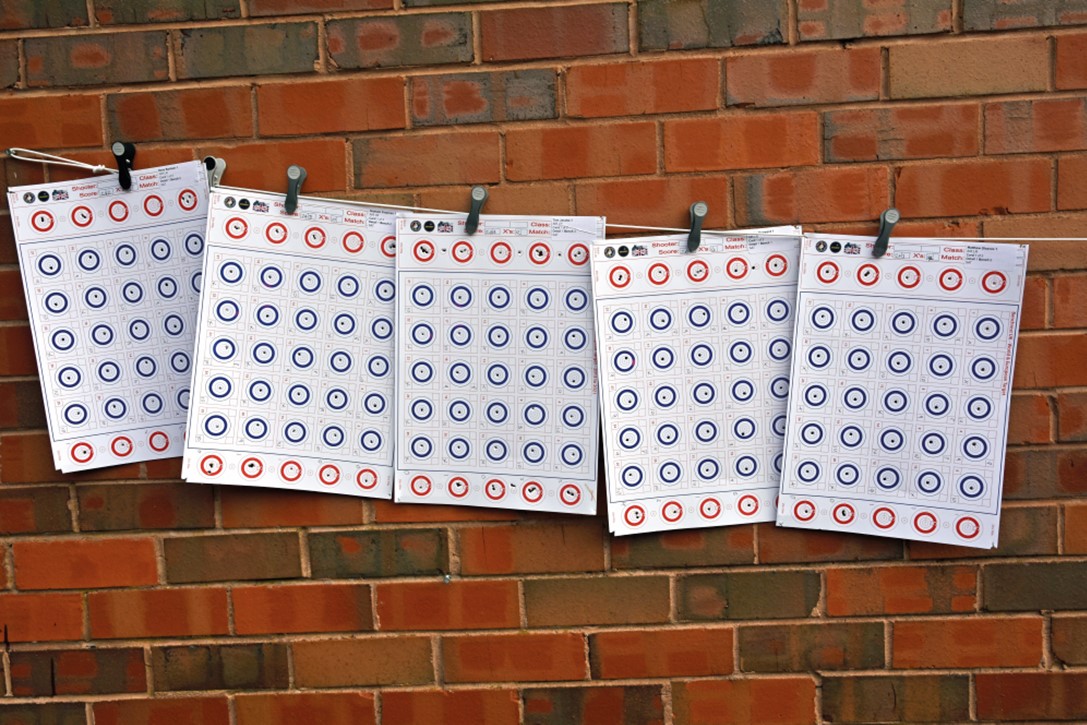
THE RESULTS
We had a great presentation ceremony, with prizes and trophies aplenty. Neil Caddick won the Rookie competition with Carl Broadis second and Sid Silverstone third. Matthew Gleaves won the Pro Light Rifle event with an impressive 741 overall (a bad day for him), whith Graham Freeman coming in second on 738 and my mentor, Jason Lockett, in third with 736.
Carl Broadis also walked away with a Walther RM8 rifle from the draw, kindly donated by John Rothery Wholesale.
I’d like to thank absolutely everyone involved for making me feel so welcome and for putting on such a great event. I’ll see you all again soon.
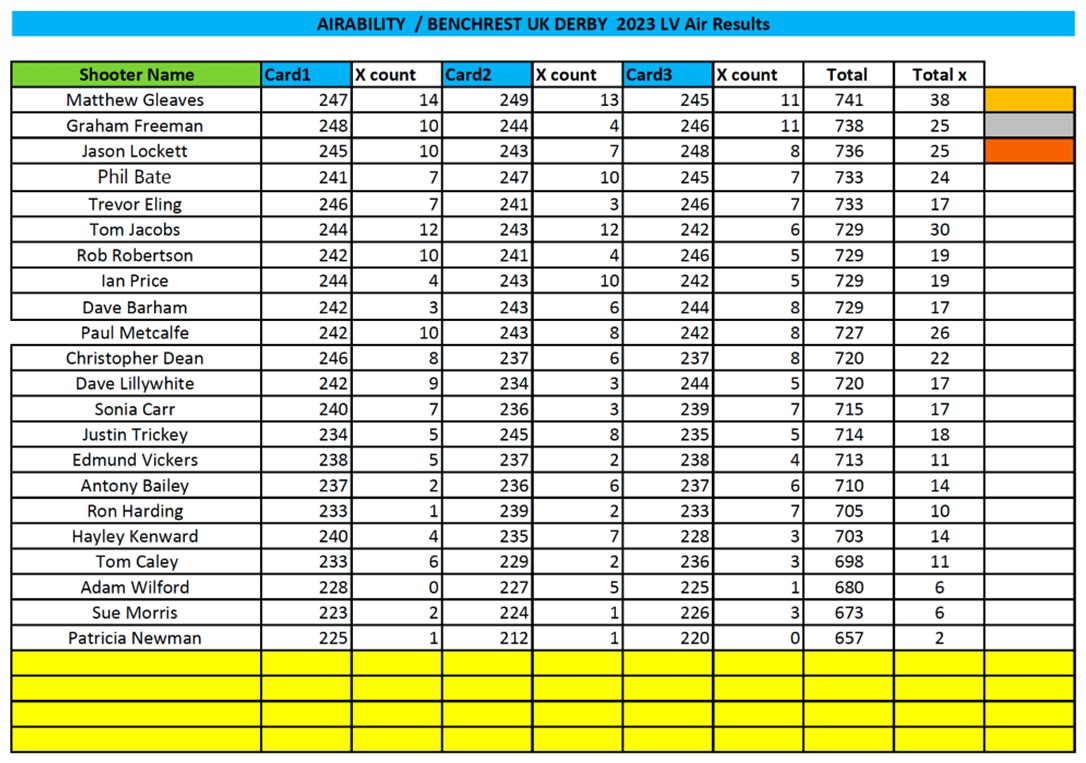
INFO
For more info on how to get yourself into this wonderful sport, check out the AirAbility Facebook page, as well as Benchrest UK Air and Rimfire Shooting.
Also visit the AirAbility YouTube page, and the dedicated websites; www.airability.uk and www.benchrestuk.com
A BIT ABOUT AIRABILITY
Matthew Gleaves set up the YouTube channel, website and social media groups to promote inclusivity within the UK airgun shooting community. With a focus on shooters with physical limitations.